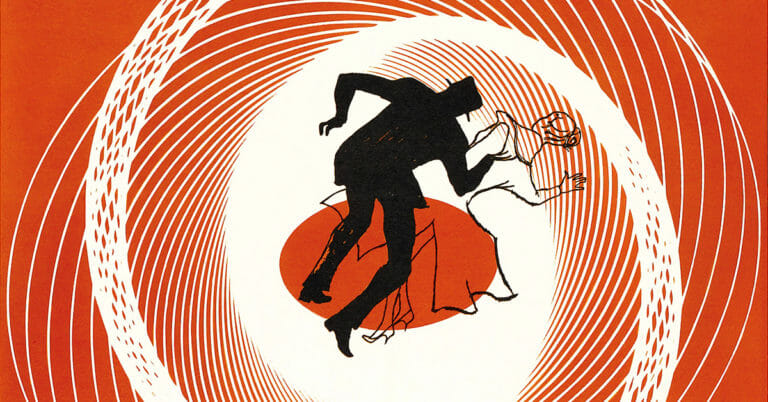By Clare Nina Norelli · April 13, 2018

The relationship between a director and composer is often a fleeting one. A film is completed, the composer is shown the final cut and directed as to where musical cues are required. The composer then writes their musical cues, having little to no involvement as to how their music is edited into the film. However, there are cases in which a successful collaborative process has evolved between a composer and director, leading to a fruitful partnership that can sometimes span decades. There may be several reasons for continual collaboration between a director and composer—a mutual respect for one another’s work, trust, friendship—but of those partnerships that stand out in cinema there is one thing they all share: a marriage of image and music which perfectly complements one another; a symbiosis of creative vision which results in an unforgettable film score.
Here are three famous pairings of director and composer and the film that best embodies their partnerships.
Vertigo (1958)
Bernard Herrmann was already an established compositional force in Hollywood by the time he first worked with Alfred Hitchcock on The Trouble with Harry in 1955, having previously scored Orson Welles’ highly acclaimed Citizen Kane (1941) and Robert Wise’s sci-fi classic The Day the Earth Stood Still (1951). Hitchcock, unlike many other directors of his day, allowed Herrmann to visit a film’s set and discuss with the director whether music would be appropriate for a scene or not. For Vertigo (1958), Hitchcock wanted Herrmann’s music to “speak” for the film’s tortured, largely-silent protagonist Scottie. Herrmann perfectly complements Vertigo’s onscreen themes of neurotic obsessiveness and romantic heartbreak via his use of harmonic suspension and dissonance, which gives his music a feeling of restlessness and unease. Vertigo’s score also features Herrmann’s signature orchestrations (unorthodox combinations of instruments that garner unusual sound worlds) and has continued to both fascinate listeners and influence subsequent generations of composers.
E.T. The Extra-Terrestrial (1982)
John Williams may be best known for the themes he wrote for his iconic Star Wars (1977) score, but it is with Steven Spielberg that he has had his longest working relationship, scoring nearly every single film by the celebrated director. The pair first collaborated on Spielberg’s debut, The Sugarland Express in 1974, followed by the blockbuster Jaws in 1975, for which Williams contributed his famous theme centered around a menacing, repetitive semitone motif. Williams has commented that he finds Spielberg’s films to be very “rhythmical,” with a distinct tempo to his pacing, and consequently he finds it easier to score than films for other directors. When Spielberg moved in more family-orientated fare in the 1980s, Williams’ music followed suit. For E.T. he wrote a beautifully whimsical score that is also romantic in parts, the perfect musical rendering of Spielberg’s nostalgia for childhood adventure and discovery. During the film’s most celebrated scene E.T. escapes from authorities on Elliot’s bicycle, using his telekinetic powers to elevate himself, Elliott, and their friends into the air. Williams’ evocative music brings greater emotional resonance to the onscreen action, soaring breathlessly as E.T. and the children ascend into the sky.
Blue Velvet (1986)
Veteran composer Angelo Badalamenti was initially enlisted for David Lynch’s Blue Velvet as a vocal coach for Isabella Rossellini, who was having trouble singing the film’s title song in her role as cabaret singer Dorothy Vallens. Concurrently, Lynch was attempting to secure the rights for This Mortal Coil “Song to the Siren” for use within his film. When the song proved too expensive to use, a producer on the film suggested that Lynch write some lyrics and have Badalamenti compose music to accompany them. Together, they wrote the hauntingly beautiful “Mysteries of Love,” with Julee Cruise contributing breathy, heavily-sustained vocals that imbued Lynch’s transcendental lyrics and Badalamenti’s synthesized strings with an added ethereality. Lynch was such a fan of the work Badalamenti did with both his arrangement of “Blue Velvet” and “Mysteries of Love” that Badalamenti was asked to score the entire film. From Blue Velvet they then worked together on the landmark television series Twin Peaks, further developing their unique compositional process: Lynch sits by Badalamenti and his keyboard and speaks to the composer—just a few words of inspiration or an idea—whilst Badalamenti improvises, eventually leading to the creation of a theme or piece.
David Cronenberg and Howard Shore
Darren Aronofsky and Clint Mansell
Federico Fellini and Nino Rota
Nicholas Winding Refn and Cliff Martinez
The Coen Brothers and Carter Burwell
Peter Greenaway and Michael Nyman
Tim Burton and Danny Elfman
Brian De Palma and Pino Donaggio
Billy Wilder and Miklós Rózsa
Spike Lee and Terence Blanchard
Jacques Demy and Michel Legrand
Blake Edwards and Henry Mancini
Sergio Leone and Ennio Morricone
 Clare Nina Norelli is a composer, musician, teacher and writer. She currently writes Scores on Screen, a column on film music for MUBI’s Notebook and in February of 2017 her first book Soundtrack from Twin Peaks was published as part of Bloomsbury’s 33 1/3 series. You can follow her on twitter @clarenorelli.
Clare Nina Norelli is a composer, musician, teacher and writer. She currently writes Scores on Screen, a column on film music for MUBI’s Notebook and in February of 2017 her first book Soundtrack from Twin Peaks was published as part of Bloomsbury’s 33 1/3 series. You can follow her on twitter @clarenorelli.